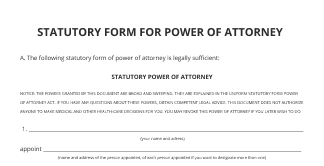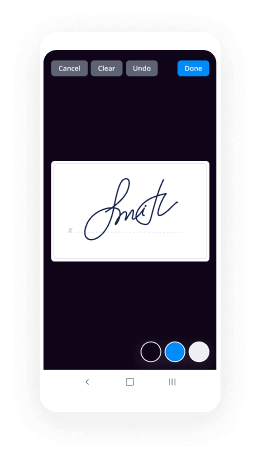Stay Secure with GDPR Sign. Use eSignature Tools that Work Where You Do.
Do more on the web with a globally-trusted eSignature platform
Outstanding signing experience
You can make eSigning workflows user-friendly, fast, and productive for your clients and team members. Get your paperwork signed within a matter of minutes
Reliable reporting and analytics
Real-time access combined with instant notifications means you’ll never miss anything. View stats and document progress via easy-to-understand reporting and dashboards.
Mobile eSigning in person and remotely
airSlate SignNow enables you to eSign on any device from any location, regardless if you are working remotely from your home or are in person at your workplace. Each signing experience is versatile and easy to customize.
Industry regulations and compliance
Your electronic signatures are legally binding. airSlate SignNow ensures the top-level compliance with US and EU eSignature laws and supports market-specific rules.
Gdpr compliant esignature, faster than ever before
airSlate SignNow provides a gdpr sign feature that helps improve document workflows, get contracts signed quickly, and work effortlessly with PDFs.
Handy eSignature extensions
Take full advantage of easy-to-install airSlate SignNow add-ons for Google Docs, Chrome browser, Gmail, and more. Access airSlate SignNow’s legally-binding eSignature features with a mouse click
See airSlate SignNow eSignatures in action
airSlate SignNow solutions for better efficiency
Keep contracts protected
Enhance your document security and keep contracts safe from unauthorized access with dual-factor authentication options. Ask your recipients to prove their identity before opening a contract to gdpr sign form.
Stay mobile while eSigning
Install the airSlate SignNow app on your iOS or Android device and close deals from anywhere, 24/7. Work with forms and contracts even offline and esignature gdpr consent later when your internet connection is restored.
Integrate eSignatures into your business apps
Incorporate airSlate SignNow into your business applications to quickly gdpr compliant esignature without switching between windows and tabs. Benefit from airSlate SignNow integrations to save time and effort while eSigning forms in just a few clicks.
Generate fillable forms with smart fields
Update any document with fillable fields, make them required or optional, or add conditions for them to appear. Make sure signers complete your form correctly by assigning roles to fields.
Close deals and get paid promptly
Collect documents from clients and partners in minutes instead of weeks. Ask your signers to gdpr sign and include a charge request field to your sample to automatically collect payments during the contract signing.
Collect signatures
24x
faster
Reduce costs by
$30
per document
Save up to
40h
per employee / month
Our user reviews speak for themselves






be ready to get more
Why choose airSlate SignNow
-
Free 7-day trial. Choose the plan you need and try it risk-free.
-
Honest pricing for full-featured plans. airSlate SignNow offers subscription plans with no overages or hidden fees at renewal.
-
Enterprise-grade security. airSlate SignNow helps you comply with global security standards.

Your step-by-step guide — esignature gdpr consent
Expand your team's functionality with airSlate SignNow advantages including progress tracking, advanced administration, limitless storage space capacity, 24/7 expert-level assistance, and more. Follow deadlines, share and review agreements and obtain approvals while using gdpr compliant esignature. When your entire conversation is in one spot, you can drive the outcomes from everywhere.
How to fill out and sign a gdpr sign form
- Using Google/Facebook enter your account or set an e-mail and password.
- Load numerous files, generate contracts from scratch or discover templates.
- Customize a PDF making it fillable with smart fields.
- Drag & drop elements anywhere on the PDF page.
- eSign documents legally and make complex eSignature workflows.
- Generate a signing link, bring users to sign and keep track of the performance.
- Operate on the move on any device.
airSlate SignNow is the only viable gdpr sign form platform to keep workmates informed on progress without resorting to routine appointments. Make, handle and store your docs in the cloud or in your own infrastructure. Your airSlate SignNow workspace is tied to your rules!
How it works
Upload your form and esignature gdpr consent
Gdpr compliant esignature from anywhere
Save changes after you gdpr sign
airSlate SignNow features that users love
See exceptional results gdpr sign form
be ready to get more
Get legally-binding signatures now!
FAQs gdpr sign
-
What are the 7 principles of GDPR?
The GDPR sets out seven principles for the lawful processing of personal data. Processing includes the collection, organisation, structuring, storage, alteration, consultation, use, communication, combination, restriction, erasure or destruction of personal data. -
What are the 8 data protection principles?
Personal data shall be processed fairly and lawfully Transparency should stretch to clearly informing the corresponding individual of your correct business information, how the data subjects information shall be used and that they are able to access that information upon request. -
What are the 7 data protection principles?
The GDPR sets out seven principles for the lawful processing of personal data. Processing includes the collection, organisation, structuring, storage, alteration, consultation, use, communication, combination, restriction, erasure or destruction of personal data. -
What are the 5 global privacy principles?
In this chapter, we focus on the five core principles of privacy protection that the FTC determined were "widely accepted," namely: Notice/Awareness, Choice/Consent, Access/Participation, Integrity/Security, and Enforcement/Redress. -
How many principles underpin the Data Protection Act?
The Data Protection Act's 8 key principles. If your organisation deals with personal data, you must ensure that you consistently act in accordance with the eight key principles set out in the Data Protection Act. -
What does GDPR mean in simple terms?
GDPR stands for General Data Protection Regulation. It's a game-changing data privacy law set out by the EU, and it's going to be enforceable from May 25th, 2018. But don't be fooled by the law emanating from the European Union. -
What is the GDPR in simple terms?
The General Data Protection Regulation (GDPR) is a legal framework that sets guidelines for the collection and processing of personal information from individuals who live in the European Union (EU). ... The GDPR mandates that EU visitors be given a number of data disclosures. -
What is GDPR in layman's terms?
GDPR, which stands for General Data Protection Regulation, has been on a planned rollout in the European Union (EU) since May 2016. The regulation now gives individuals power over the use of their personal data and holds organizations accountable for their data collection and usage practices. -
What are GDPR requirements?
GDPR is a regulation that requires businesses to protect the personal data and privacy of EU citizens for transactions that occur within EU member states. And non-compliance could cost companies dearly. -
What does Principle 2 of GDPR mean?
The second principle is that of purpose limitation. It means that personal data are to be collected only for specified, explicit and legitimate purposes and it is not allowed to process them further in a way that is not compatible with those purposes. -
What does the principle of data security mean in practice?
The GDPR states that personal data must be \u201cprocessed in a manner that ensures appropriate security of the personal data, including protection against unauthorised or unlawful processing and against accidental loss, destruction or damage, using appropriate technical or organisational measures\u201d. -
Which principle defines how personal data will be collected?
The second principle is that of purpose limitation. It means that personal data are to be collected only for specified, explicit and legitimate purposes and it is not allowed to process them further in a way that is not compatible with those purposes. -
What is a GDPR consent form?
Consent of the data subject means any freely given, specific, informed, and unambiguous indication of the data subject's wishes by which he or she, by a statement or by a clear affirmative action, signifies agreement to the processing of personal data relating to him or her. -
Do you need written consent for GDPR?
The GDPR is clear that consent requires clear affirmative action, and Recital 32 sets out additional guidance on this: \u201cConsent should be given by a clear affirmative act\u2026 such as by a written statement, including by electronic means, or an oral statement. -
Does GDPR consent have to be in writing?
The GDPR is clear that consent requires clear affirmative action, and Recital 32 sets out additional guidance on this: \u201cConsent should be given by a clear affirmative act\u2026 such as by a written statement, including by electronic means, or an oral statement. -
Do you always need consent to use personal data?
No. Organisations don't always need your consent to use your personal data. They can use it without consent if they have a valid reason. These reasons are known in the law as a 'lawful basis', and there are six lawful bases organisations can use. -
How do you ask for GDPR consent?
Specific - the person must be asked to consent to individual types of data processing. Informed - the person must be told what they're consenting to. Unambiguous - language must be clear and simple. Clear affirmative action - the person must expressly consent by doing or saying something. -
How do I withdraw consent from GDPR?
Send an email to privacy@backblaze.com using the email address of your Backblaze account for which you wish to withdraw your consent. Please specify the scope of your request. ... File a Backblaze Help request. -
How do I withdraw consent under GDPR?
Consent must be freely given, specific, informed and unambiguous. A request for consent must be intelligible and in clear, plain language. Silence, pre-ticked boxes and inactivity will no longer suffice as consent. Consent can be withdrawn at any time. -
When can consent from an individual be withdrawn GDPR?
Anyone who refuses to consent or who doesn't reply must be removed from your records. Individuals are also free to withdraw their consent at any time, which again means you have to remove them from your records. -
How do you get consent under GDPR?
The basic requirements for the effectiveness of a valid legal consent are defined in Article 7 and specified further in recital 32 of the GDPR. Consent must be freely given, specific, informed and unambiguous. In order to obtain freely given consent, it must be given on a voluntary basis. -
Is consent required under GDPR?
Contrary to popular belief, the EU GDPR (General Data Protection Regulation) does not require businesses to obtain consent from people before using their personal information for business purposes. Rather, consent is just one of the six legal bases outlined in Article 6 of the GDPR. -
Which of these is a requirement for consent to be given under the GDPR?
In short, under the GDPR: Consent must be freely given, specific and unambiguous. Organisations must be able to demonstrate that a data subject provided consent. Data subjects have the right to withdraw consent at any time. -
Can personal data be shared without consent?
In certain cases, personal data cannot be shared unless you have the explicit consent of the data subject. ... sharing personal data that is sensitive or confidential. sharing personal data for purposes of marketing. -
Is consent a legal basis for processing personal data?
The law provides six legal bases for processing: consent, performance of a contract, a legitimate interest, a vital interest, a legal requirement, and a public interest. ... That's a processing activity that a data subject would normally expect an organization that it gives its personal data to do. -
How do I make GDPR compliant?
Ask for consent (opt-in) Under GDPR, consent is required for each separate use of an individual's personal data. ... Access to data. Individuals who fill-in your forms have the right to ask you to access personal information you have collected from them. ... Remove personal data. -
Can I buy contact lists under GDPR?
GDPR states that, to contact an individual, you need explicit consent from them. Most of the time, individuals whose email addresses are on a bought data list have not explicitly agreed for companies such as yours to contact them, therefore you would be breaking GDPR regulations by doing so. -
What is a data protection statement?
The GDPR (General Data Protection Regulation) gives individuals more control over how their personal data is used. If your organisation processes personal data, the Regulation requires you to provide data subjects with certain information. This typically takes the form of a data privacy statement or privacy notice. -
What does GDPR mean for email marketing?
Email marketing under GDPR essentially means that, as an email marketer, you need to collect freely given, specific, informed and unambiguous consent (Article 32). To achieve compliance, you have to adopt new practices: New consumer opt-in permission rules; Proof of consent storing systems; and. -
How do I write a small business privacy policy?
Never ask for more information than is necessary. If you do not require a customer's date of birth to provide services, do not ask for it. ... Write in plain language. ... Customize to your business. ... Implement good information practices. -
Are emails covered by GDPR?
From names and email addresses to attachments and conversations about people, all could be covered by the GDPR's strict new requirements on data protection. Any organization (companies, charities, even micro-enterprises) that handles the personal information of EU citizens or residents is subject to the GDPR.
What active users are saying — esignature gdpr consent
Frequently asked questions
How can I eSign an attachment I received in my email?
airSlate SignNow helps enhance your business with a fine-tuned digital workflow. Take advantage of our integration with Gmail and sign an email attachment without leaving your inbox. Install the add-on from the G Suite Marketplace and log into your airSlate SignNow account. Open your inbox and find the email with the attachment you need to sign and click on the airSlate SignNow icon in the right-hand side menu. You can sign an email or send it for signing instantly.
How do I sign and email back a PDF?
After you've uploaded a document to airSlate SignNow and added an electronic signature, you have several ways to export it. If you need to send it via email, you have two methods. The first one is to download the PDF and attach it to the email. The second it from your Dashboard, select the needed file, click More -> Email a Copy. In the pop-up window, enter the recipient's contacts, subject, and message (if required). This way, you'll send a signed document without leaving the service or jumping windows.
How can I sign emailed documents?
Get and install the airSlate SignNow add-on in your Gmail account. Open an email with the attachment that needs to be eSigned. Click on the airSlate SignNow add-on on the right. Hit Upload to sign the document yourself or enter a recipient's email address and send the attachment for signing.
Get more for gdpr sign form
- AirSlate SignNow's CRM vs. Apptivo for Government
- AirSlate SignNow's CRM vs. Apptivo for Healthcare
- AirSlate SignNow's CRM vs. Apptivo for Higher Education
- AirSlate SignNow's CRM vs. Apptivo for Insurance Industry
- AirSlate SignNow's CRM vs. Apptivo for Legal Services
- AirSlate SignNow's CRM vs. Apptivo for Life Sciences
- AirSlate SignNow's CRM vs. Apptivo for Mortgage
- AirSlate SignNow's CRM vs. Apptivo for Nonprofit
The ins and outs of eSignature
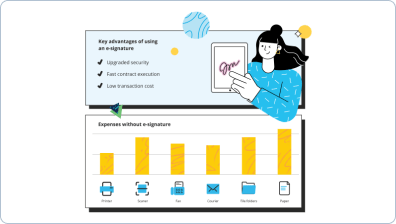
What is an electronic signature?
Get to know what and electronic signature actually is, its main peculiarities and why it is more convenient than a hand-written one.
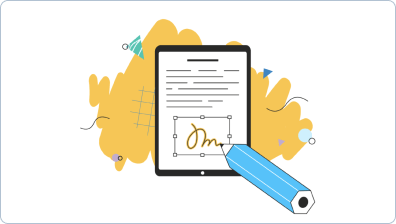
How to simplify real estate operations with an eSignature solution
Learn how to speed up real estate operations, conclude deals in a few minutes from any place and any device.
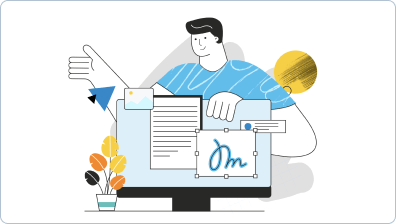
A Detailed Guide on How to Sign a PDF Online in airSlate SignNow
Doing business digitally is the only way to increase the efficiency of your signature workflows. Learn how to edit and sign a PDF right from your airSlate SignNow account.
Find out other esignature gdpr consent
- Signature request in India
- Authorized signatures in India
- Electronic signature policy for medical records in ...
- How to do an electronic signature on PDF in India
- How to create a signature for PDF in India
- How to do electronic signature in PDF in India
- How to create a signature for Gmail in India
- How to create Gmail signature in India
- How to add an electronic signature in Word in India
- How to create a signature on Word in India
- How to sign something online in India
- How to get a electronic signature in India
- How to make online signature in India
- How to create an email signature on Gmail in India
- How to make an email signature on Gmail in India
- How to make signature on Word in India
- How to put a signature in Word in India
- How to input signature in Word in India
- How to make electronic signatures in India
- How to set up signature on Outlook in India





